Fix: Error 0x8024500c When Installing Windows Updates
Error 0x8024500c often prevents Windows Updates from installing, leaving the system unable to download necessary updates. This error code specifically indicates an issue with the Windows Update components, usually involving the Background Intelligent Transfer Service (BITS) or the Windows Update service itself.
The most common cause is a corrupted or misconfigured Windows Update component, though it can also be triggered by network-related problems or issues with antivirus software interfering with the update process.
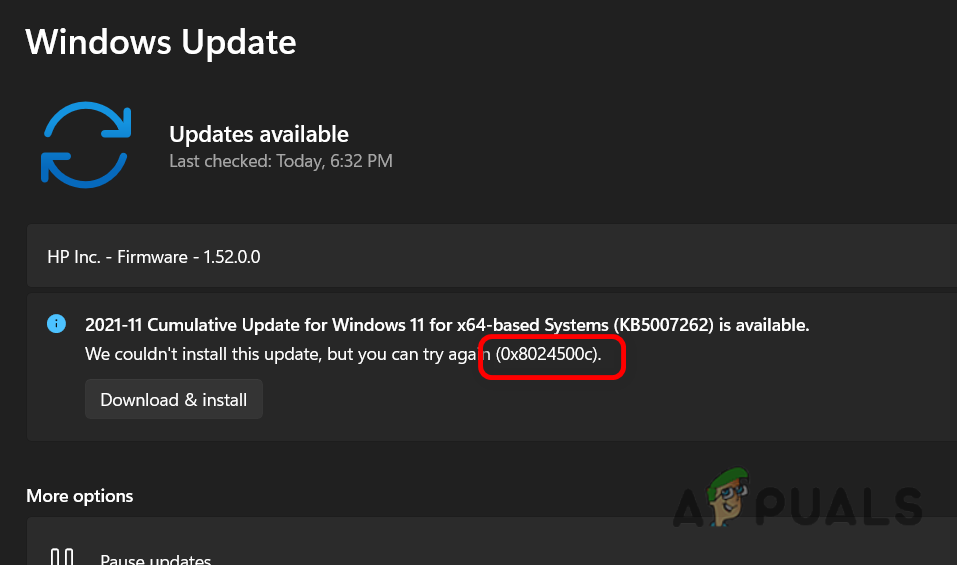
We will try different approaches to find and eliminate the root cause of this error. Follow the methods below to fix this error.
1. Reset Windows Update Services & Cache
Windows relies on a few services to update. If these services are stopped or disabled by a third-party program, it won’t be able to update your Windows. Therefore, we will restart these services and ensure they are enabled at startup to fix this issue.
- Download this batch file we created for you (here).
- Once it’s downloaded, run it as an administrator.
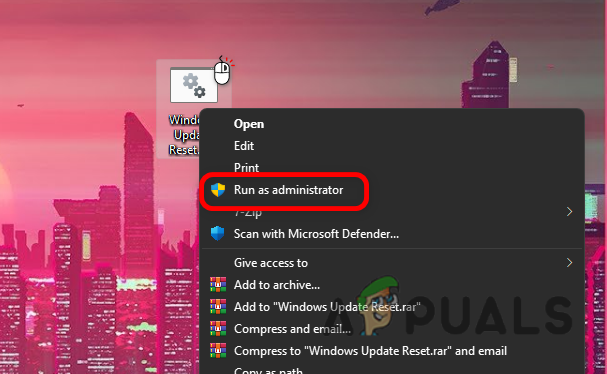
Running the Batch file as an administrator - After running the file as an administrator, wait for the process to complete.
- Once the repair process is completed, restart your computer.
2. Try Updating Manually
You can try to install the update manually through the official Microsoft Windows Update catalog. This process downloads the update setup file, bypassing the files that Windows usually downloads to update your system, which in most cases avoids these error codes.
- Head over to the official Windows Update catalog.
- Search for the update you are trying to install.

Searching for Update in Catalog Note: You can find the KB version from the Windows Update settings page.
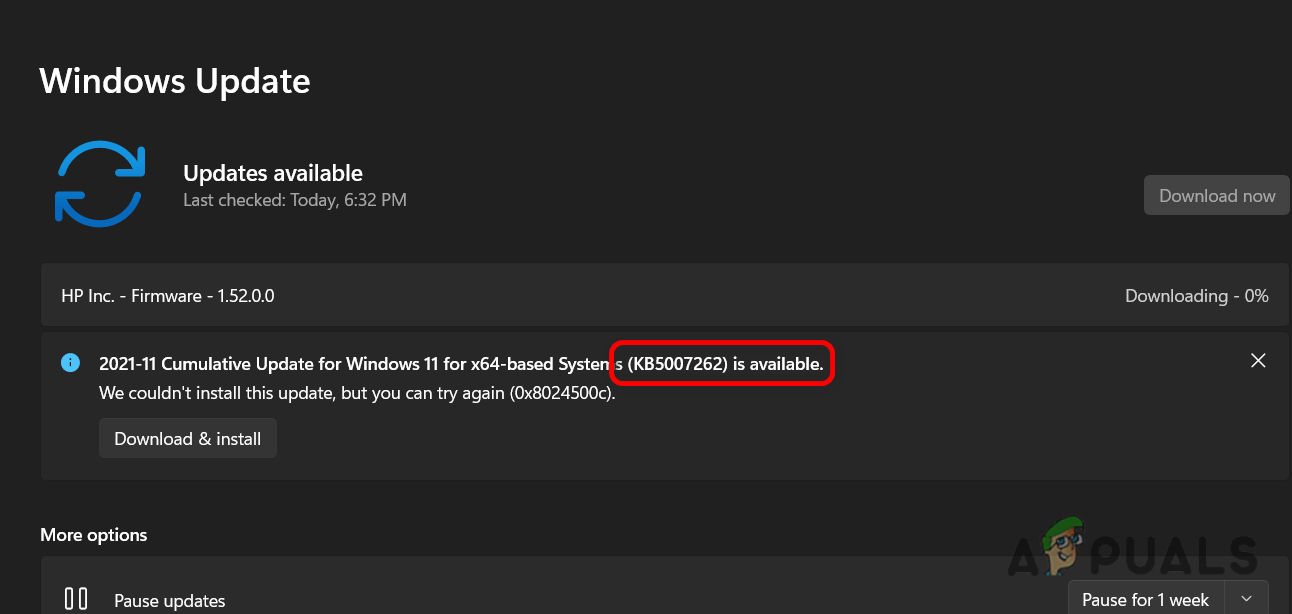
Finding your Windows Update Version - Now you have to match the name of the update in your Windows Update section with the one provided in catalogs because there are multiple architectures. If your update isn’t compatible with the architecture you are using, it will not install and show you the error ‘This update is not applicable to your computer.’

Downloading the Correct Architecture of Update - Once you find the right update, simply click on the “Download” button in front of it, and it will open a pop-up window for you.
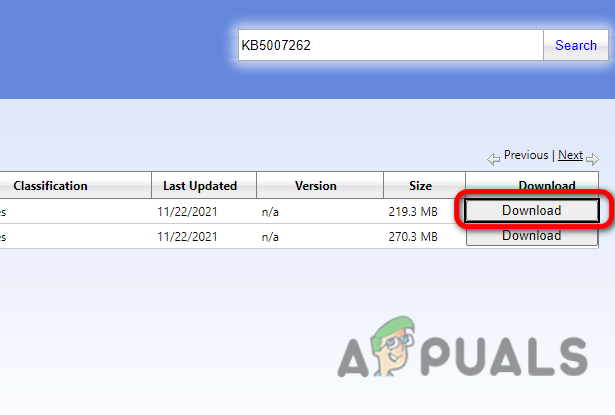
Downloading the Update - Now click the link to start downloading the update file.
- Once the update setup file is downloaded, open the file.
- Press “Yes” after the search for an update process is completed.
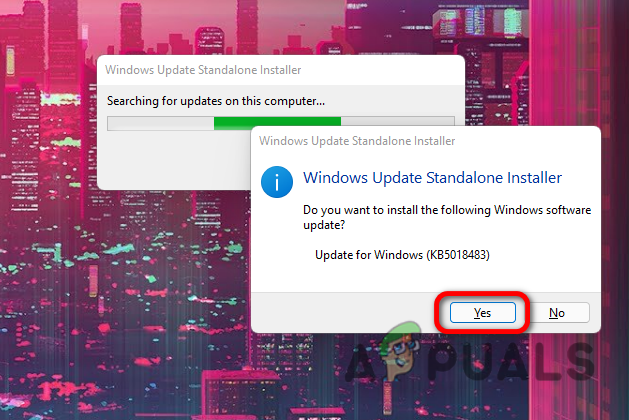
Press the Yes button to Start Windows Update Installer - Now, it should start applying the update. Follow any on-screen instructions to complete the update.

Updates Installing
3. Ignore the Update
This error is mostly reported in Windows 11, as it’s still new, and many of the updates it’s receiving are buggy. It’s best to ignore the update for some time because if it’s not installed properly, it’s possible that there is something wrong with the update itself, and there’s no need to change anything on our computer.
4. Install the Update through ISO File
You can download the latest ISO file and use it to update your Windows. This will work because it doesn’t rely on the built-in Windows services to update your system.
- Download the latest ISO file from the official website. We will download a Windows 10 ISO file for demonstration purposes.
- Once the ISO file is downloaded, double-click on it to load it to a virtual disk.
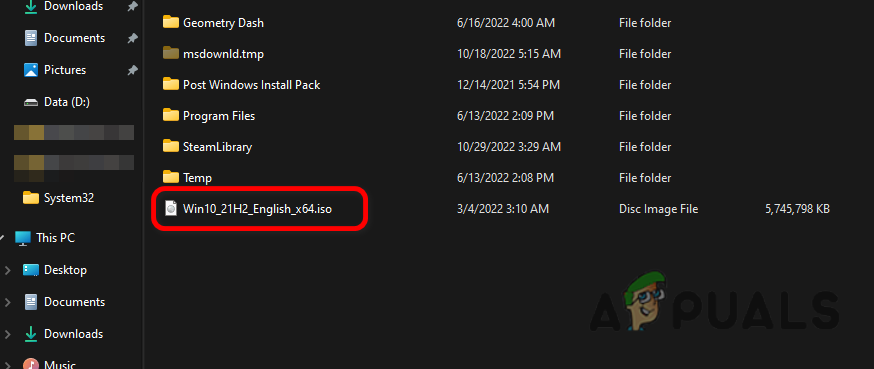
Double-click the ISO file Downloaded - Now, run the “Setup.exe” file.
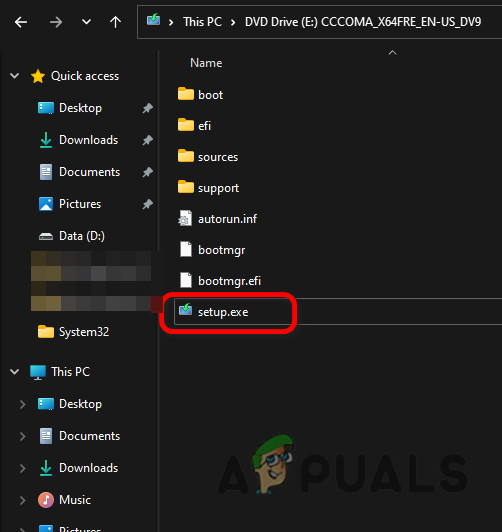
Opening Setup.exe file - Once the setup window is open, press “Next.”
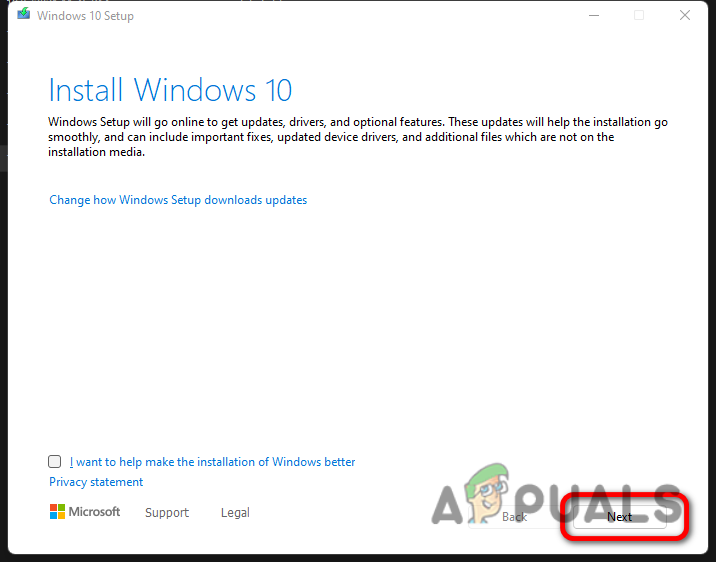
Press Next button in Startup - Let it check for updates and your PC.
- Accept the terms and conditions.
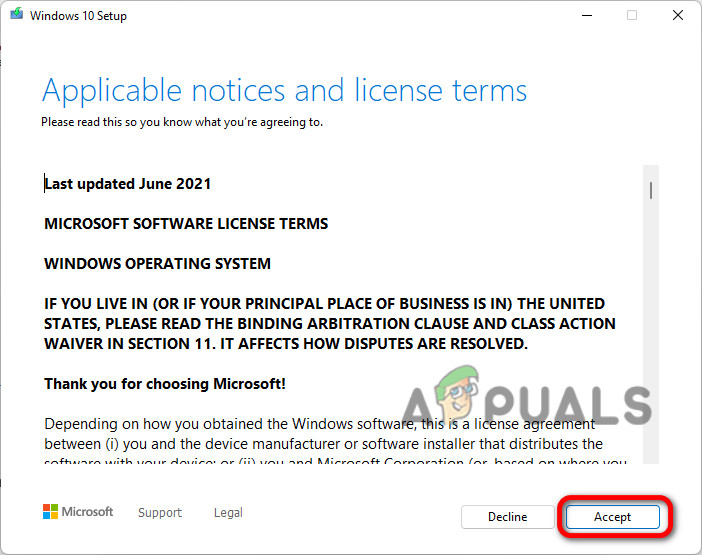
Accepting Terms and Conditions - Select “Keep Personal Files and Apps” option and press “Next.”
Note: If the “Keep Personal Files and Apps” option is greyed out, you can follow this article here to fix that issue. - Now, follow the on-screen instructions to upgrade your Windows to the new version.
This should resolve the issue. If you are still facing this issue, it is possible that it’s just a bad update and Microsoft is purposely blocking it from installing on computers. It is suggested to simply wait for the next update to get this issue resolved.





